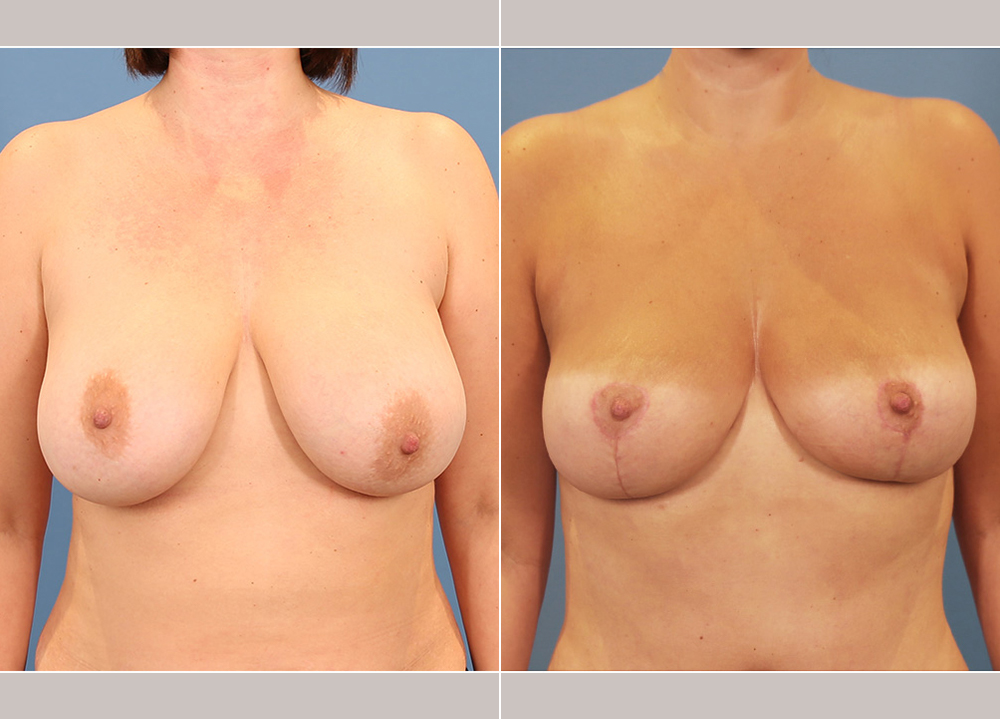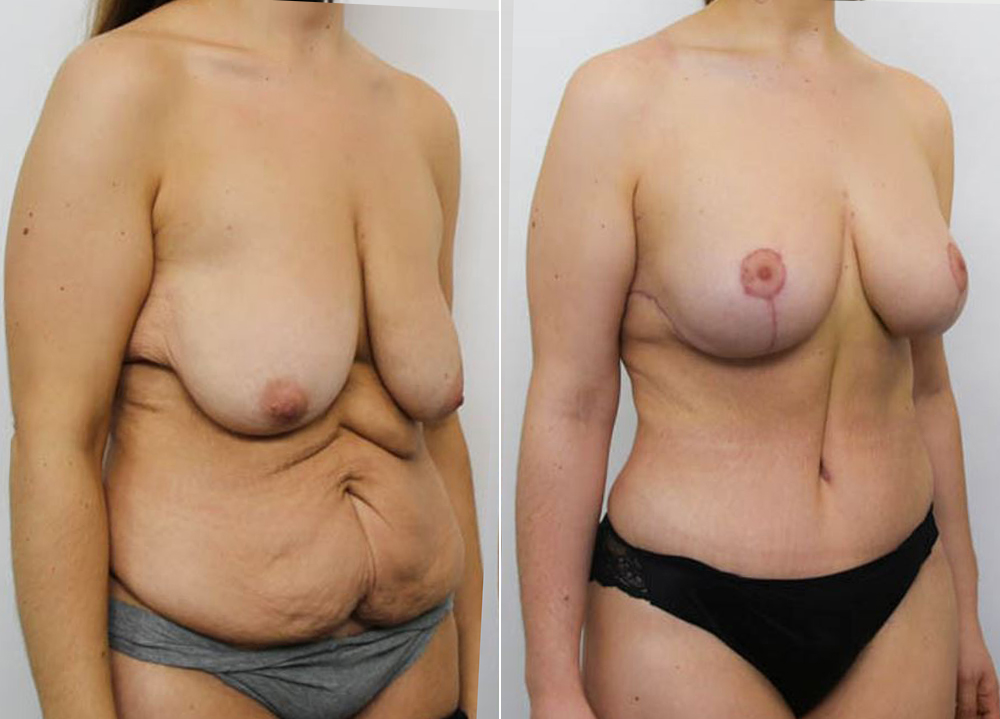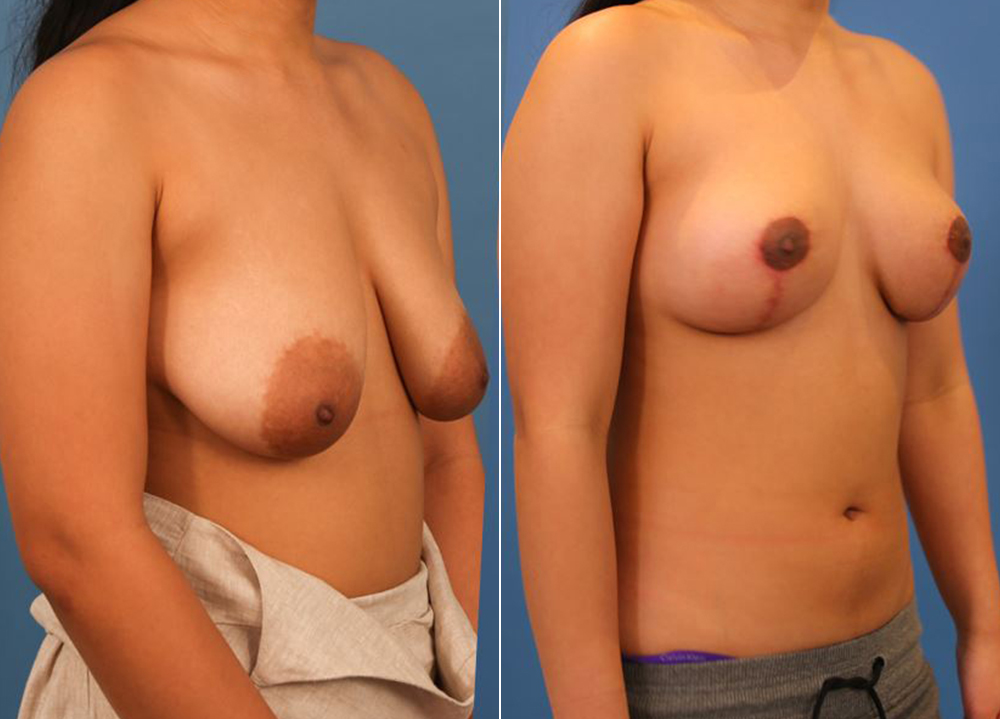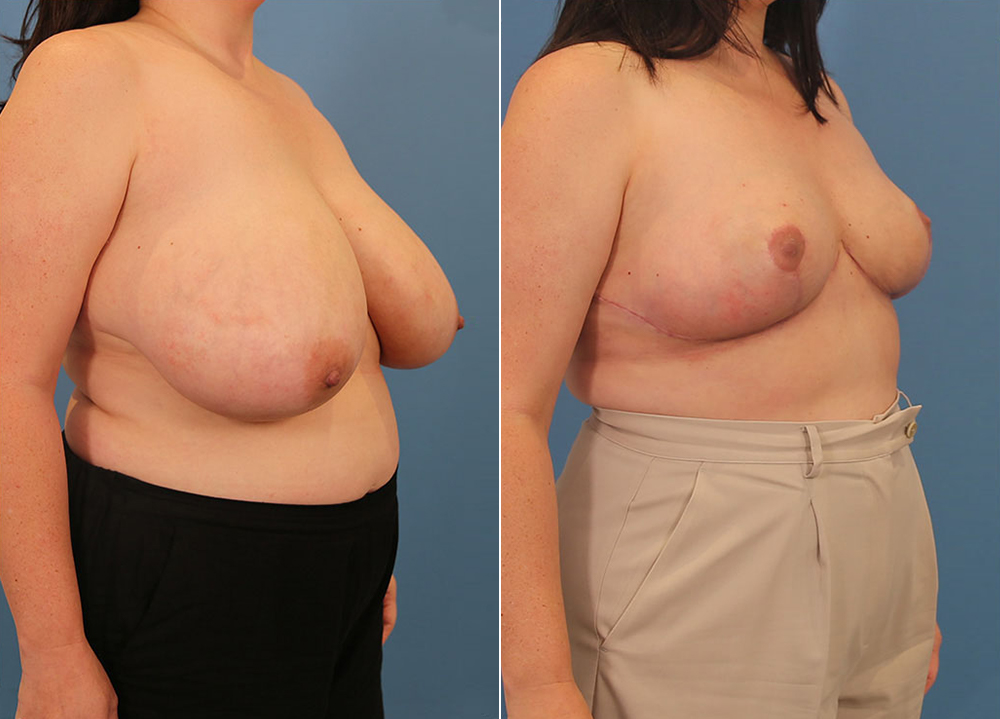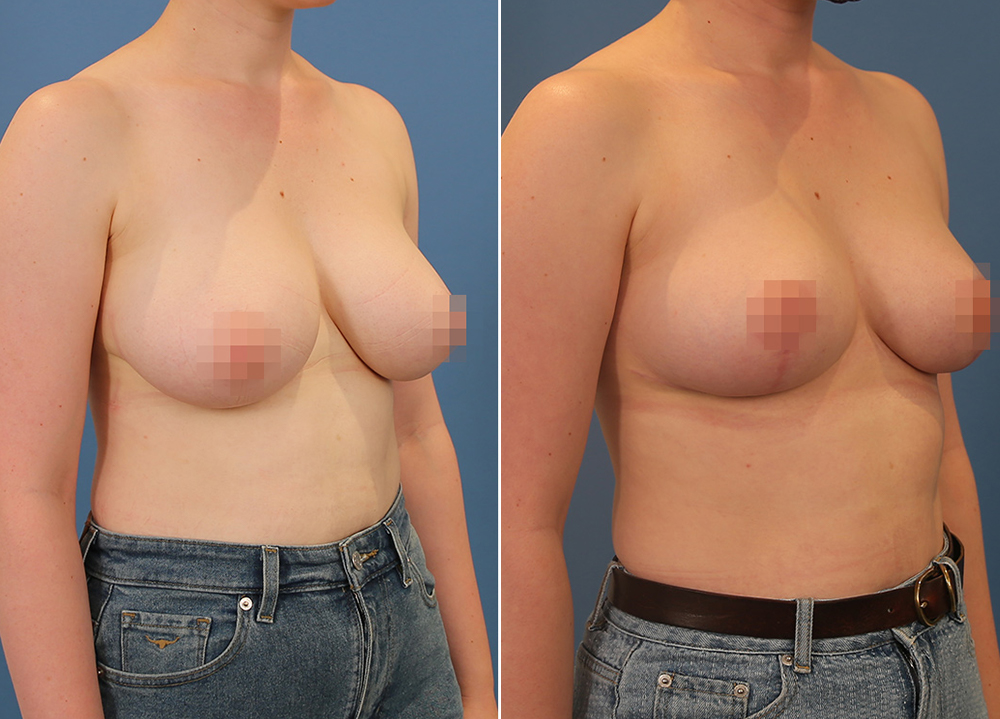




WHAT IS BREAST REDUCTION?
Breast reduction is a surgical procedure designed to reduce overly large breasts by removing excess skin and breast tissue.
Many women with heavy breasts complain of chronic back, shoulder and neck pain, or indentations in their shoulders from overtaxed bra straps.
In addition to the physical discomfort, many women avoid certain activities, exercise or types of clothing because of the size and shape of their breasts. If left untreated, these concerns can significantly impact a woman’s quality of life. Breast reduction surgery will alleviate symptoms related to large breasts.
Dr Alex Phoon is a fully qualified cosmetic and plastic surgeon and AN expert in breast reduction surgery.

EVERYONE IS AN INDIVIDUAL, SO WHY NOT BE TREATED LIKE ONE?
Breast Reduction Surgery is one of the most common types of plastic surgical operations, as it is requested by women of all ages.
Although the main component of the operation is based on making the breast smaller, it is also a unique opportunity to perform the following:
- Improve the symmetry between your breasts
- Lift the nipple higher to a better position
- Reduce or improve the appearance of the nipples and areolas
- Improve the overall balance between your breasts and underlying body shape
Reasons for a breast reduction
heavy and uncomfortable





This patient illustrates a number of features worth mentioning. Firstly, there is a 'mini-anchor' scar that goes around the nipple, then straight down to the crease under the breast and then in the crease. This is the most common scar associated with breast reductions. If you look from the side views there is still great volume that is achieved through fat grafting. I have taken fat from the abdomen and armpit areas to use to plump up the upper breast.
Young patients request breast reduction surgery frequently. The breasts are often significantly glandular which can make them heavy and uncomfortable. There is usually a strong genetic component here as large breasts can run in the family. Younger patients goals are often different to older patients who have struggled with large breasts their whole lives. The goal here is to help reduce the symptoms associated with larger breasts whilst also making the breasts look in better balance with your figure. This might mean less removal of breast tissue and more rearrangement of the at breast tissue, so the breast sits in a more position.
HELP REDUCE NECK AND BACK PAIN



There are many causes of neck and shoulder pain starting at the spine potentially all the way down to the shoulder. Having a heavy and dense breast does predispose you to having neck and shoulder pain such as this lady. Neck and shoulder pain is often dramatically improved immediately after surgery. This of course can vary from patient to patient but objective scientific studies repeatedly put breast reduction surgery as the highest satisfaction of almost any plastic surgery procedure. Photos here are taken at 6 months
I’m often amazed at how long patients will put up with the pain associated with large breasts. There are many causes of back and shoulder pain of which having large and heavy breasts are the usual suspects. A thorough history and examination is essential to track down the source of your symptoms although anecdotally, there is a very high satisfaction rate once the weight has been off-loaded from the breasts. Making your breasts significantly smaller is possible but only within the limits of what is possible with your underlying skeletal frame.
improve nipple position



This patient had sore neck and shoulders as well as breast volume and nipple asymmetry. She had a bilateral breast reduction with photos taken here at 6 months post surgery. The surgery is often day surgery but can be overnight should you want to stay in hospital or have a supportive insurance policy. The operation takes about 2 1/2 hours and all dressings are waterproof and have dissolvable sutures.
A reduction might be the only way to improve a nipple position which is low on the chest wall. This operation is often called a mastopexy (orMastopexy) and in truth, the operations share many common features. There is often minimal breast tissue removal (usually from the lower breast) and mostly glandular manipulation and folding to put the volume (and nipple) where it needs to be.
HELP WITH SAGGY SKIN AND VOLUME LOSS
Sometimes a breast reduction alone won’t give you the outcome you want. When there is volume loss, particularly in the upper part of the breast there are two options. The first is using some of your own breast tissue folded up to give you essentially a breast augmentation with your own breast tissue. This technique is often called an auto-augmentation and can work well with the right patient. There are also times when an implant might be helpful to give you an additional boost in the upper part of the breast. When an implant is used it is often called an augmentation mastopexy and it is common in patients who have had massive weight loss.
POST PREGNANCY OR WEIGHT LOSS


This patient lost a significant amount of weight and has had a breast reduction surgery to help lift the breast and return the nipple to a higher position. Of course, she has had other procedures in conjunction with the reduction. I have used hybrid fat grafting at the same time. There was no implant used in this case!
Your body is how it adapts and changes to the challenges put to it. When the dust settles, if you long for a d breast shape then sometimes breast surgery might be the answer. This might take the form of a breast augmentation or even aMastopexy with an implant (called an augmentation mastopexy).
FREQUENTLY ASKED QUESTIONS ABOUT OUR BREAST REDUCTION SURGERY PROCEDURES
All breast reductions involve a scar all the way around the areola and vertically down to the breast crease below your breast. This is called a lollipop incision and is best suited to smaller breast reductions. When the breast is larger, an anchor type or ‘inverted T’ incision is needed so the excess skin can be removed. That way you don’t get left with ruffling of the skin if you had a lollipop incision alone.
The scars are usually very well tolerated particularly if we use the latest techniques to minimise them such as silicone tapes etc. Scars always take a variable time to mature being initially pink before fading up to a year later. Some patients can have a genetic tendency to have wider scars however and any surgical benefit would need to be balanced against the risk of having wider or more visible scars.
Risks and complications of cosmetic surgery
Cosmetic surgery is still surgery and as such always has potential risks and complication. It is important for anyone considering cosmetic surgery to be well-informed and aware of the possible adverse outcomes. Dr Alex Phoon is a fully qualified Australian specialist plastic and cosmetic surgeon who operates with an experienced team in leading public and private hospitals in Sydney Australia.
In this article, we will dive into the various risks and complications associated with cosmetic surgery, providing insights into each aspect.
Scarring
One of the most common concerns among patients undergoing cosmetic surgery is the potential for scarring. While skilled surgeons strive to minimize scarring, it is an inevitable part of the healing process.
Read moreThe severity of scarring varies depending on the individual and the procedure performed. Certain factors, such as genetics and skin type, can also influence how prominent scars may be. However, it is worth noting that in many cases, scars fade over time and can be further improved through scar revision techniques.
Scarring is a natural part of the body’s healing process. When the skin is injured, whether through surgery or trauma, the body responds by forming new collagen fibres to repair the damage. This process can result in the formation of a scar, which is a visible mark on the skin that differs in texture and colour from the surrounding tissue.
There are different types of scars that can occur after cosmetic surgery. One common type is a hypertrophic scar, which is characterized by raised and thickened tissue. These scars may be red or pink in colour and can be itchy or uncomfortable. Another type of scar is a keloid, which is an overgrowth of scar tissue that extends beyond the boundaries of the original wound. Keloids are more common in individuals with darker skin tones and can be more challenging to treat.
Fortunately, advancements in surgical techniques and post-operative care have greatly improved the management of scars. Surgeons take great care in placing incisions in inconspicuous areas and using techniques to minimize tension on the wound, which can help reduce the risk of visible scarring. Additionally, patients are often advised to follow a specific scar care regimen, which may include keeping the incision site clean, applying silicone gel or sheets, and avoiding sun exposure.
In some cases, scar revision techniques may be recommended to further improve the appearance of scars. These techniques can include laser resurfacing, dermabrasion, or surgical excision. Laser resurfacing uses a laser to remove the top layers of the skin, promoting the growth of new, healthier skin cells. Dermabrasion involves using a rotating brush or diamond wheel to gently remove the outer layers of the skin, revealing smoother skin underneath. Surgical excision involves removing the scar tissue and rejoining the edges of the skin to create a more aesthetically pleasing scar.
It is important for patients to have realistic expectations when it comes to scarring. While surgeons strive to minimize scarring, it is impossible to eliminate it. However, with proper care and the use of scar revision techniques, the appearance of scars can be significantly improved. Patients should discuss their concerns and expectations with their surgeon prior to undergoing any cosmetic procedure to ensure they have a clear understanding of the potential for scarring and the available treatment options.
Infection
Infections are another risk associated with any surgical procedure, including cosmetic surgery. Despite stringent sterilization protocols followed by healthcare professionals, there is still a possibility of infection.
Read moreTo mitigate this risk, surgeons prescribe antibiotics pre- and post-surgery, adhere to aseptic techniques, and closely monitor patients for signs of infection. It is crucial for patients to follow their surgeon’s aftercare instructions to minimize the risk of infection.
When it comes to cosmetic surgery, infection is a concern that cannot be ignored. Surgical procedures, no matter how minor, create an entry point for bacteria and other microorganisms. Although healthcare professionals take every precaution to maintain a sterile environment, the human body is naturally teeming with bacteria, making it impossible to eliminate the risk entirely.
Fortunately, surgeons are aware of this risk and take proactive measures to minimize the chances of infection. One such measure is the prescription of antibiotics. Prior to surgery, patients are often given a course of antibiotics to help prevent any potential infection from taking hold. These antibiotics are carefully chosen based on the patient’s medical history and the specific procedure being performed.
Post-surgery, patients are usually required to continue taking antibiotics for a certain period. This helps to ensure that any bacteria that may have entered the body during the procedure are promptly eradicated. By adhering to the prescribed antibiotic regimen, patients can significantly reduce the risk of developing an infection.
In addition to antibiotics, surgeons also follow strict aseptic techniques during the surgical procedure itself. This involves maintaining a sterile environment, using sterile instruments and equipment, and wearing appropriate protective clothing, such as gloves and masks. These precautions help to minimize the introduction of bacteria into the surgical site, further reducing the risk of infection.
Despite these measures, it is important to note that infections can still occur. The human body is a complex system, and sometimes even the most stringent precautions cannot completely eliminate the risk. However, by closely monitoring patients for signs of infection, surgeons can detect and treat any potential infections early on, preventing them from becoming serious complications.
Patients also play a crucial role in minimizing the risk of infection. Following the surgeon’s aftercare instructions is of utmost importance. This may include keeping the surgical site clean and dry, avoiding certain activities or behaviours that could increase the risk of infection, and promptly reporting any signs of infection, such as redness, swelling, or discharge.
In conclusion, while the risk of infection is present in any surgical procedure, including cosmetic surgery, healthcare professionals take numerous precautions to minimize this risk. From prescribing antibiotics to following aseptic techniques, surgeons prioritize patient safety and strive to create the best possible outcome. However, it is essential for patients to actively participate in their own aftercare and follow the instructions provided by their surgeon to further reduce the risk of infection.
Pain
Pain and discomfort is a common experience following cosmetic surgery but can be mitigated with modern analgesic strategies.
Read moreThe extent of pain can vary depending on the procedure, the individual’s pain tolerance, and the body’s healing response. Surgeons typically prescribe pain medications to manage any discomfort during the recovery period. It is important for patients to communicate their pain levels with their healthcare providers, as proper pain management is crucial for a smooth recovery.
Undesirable cosmetic outcome
While cosmetic surgery aims to enhance aesthetics, there is always a risk of an undesirable cosmetic outcome.
Read moreFactors such as unrealistic expectations and the biological unpredictability of healing can contribute to suboptimal results. It is essential for patients to have open and honest discussions with their surgeons about their desired outcomes, potential limitations, and realistic expectations. This helps ensure that both parties are on the same page and reduces the chances of disappointment. Revision surgery might be an option should this be an issue.
Nerve damage
Another potential complication of cosmetic surgery is nerve damage.
Read moreSurgeons take great care to avoid damaging nerves during procedures, but it is not always possible to eliminate this risk entirely. Nerve damage can cause numbness, tingling, or loss of sensation in the operated area. In most cases, nerve function gradually improves, but it may take some time for complete resolution. Patients should be aware of this potential risk and discuss it with their surgeon before proceeding with the surgery.
Bruising and swelling
Bruising and swelling are common after cosmetic surgery, particularly in the early stages of recovery.
Read moreThese symptoms are part of the body’s natural response to trauma. Surgeons may recommend compression garments, elevation, and cold compresses to help minimize these effects. While bruising and swelling are temporary, they can cause discomfort and can affect the recovery timeline. Patience and adherence to post-operative guidelines can aid in reducing the duration and severity of these side effects.
Bleeding
Bleeding during or after surgery is a potential complication that can occur in any surgical procedure, including cosmetic surgery.
Read moreSurgeons take measures to control bleeding during the operation, but occasionally, some post-operative bleeding may occur. It is crucial for patients to inform their healthcare providers if they experience excessive bleeding or if they are unable to control bleeding with gentle pressure. Immediate medical attention is necessary to address this complication. If there is major bleeding, you might require a blood transfer or transfer to a hospital for additional treatment.
Seroma
A seroma is a pocket of fluid that can accumulate under the skin after surgery.
Read moreIt forms as a result of the body’s inflammatory response. Seromas are more common in larger surgical procedures and can lead to swelling and discomfort. Surgeons may drain seromas through aspiration or place drains to prevent their accumulation. A surgical drain can be used to minimise this risk. Close monitoring by healthcare providers is crucial to ensure the timely detection and management of seromas.
Anaesthetic complications
Although rare, complications related to anaesthesia can occur during cosmetic surgery.
Read moreAnaesthesia is administered to ensure patient comfort and safety during the procedure. Factors such as individual reactions, allergies, or underlying health conditions can increase the risk of complications. Anaesthetists are highly trained professionals who monitor patients closely throughout the surgery to minimize any potential risks.
Death
While the risk of death from cosmetic surgery is extremely low, it is essential to acknowledge that any surgical procedure carries inherent risks.
Read moreEvery effort is made to prioritize patient safety and ensure favourable outcomes. The preoperative assessment, careful surgical planning, and adherence to appropriate protocols help minimize this risk. Patients should discuss their specific concerns with their surgical team and feel confident in the expertise and experience of their chosen surgeon.
In conclusion, cosmetic surgery offers individuals an opportunity to enhance their appearance, but it is essential to recognize that it is not without its risks and complications. By understanding and discussing these potential outcomes with their surgeons, patients can make informed decisions and take necessary precautions to optimize their safety and overall surgical experience. With proper expectations, diligent aftercare, and open communication, the risks associated with cosmetic surgery can be minimized, and the goal of achieving desired aesthetic improvements can be realized.



